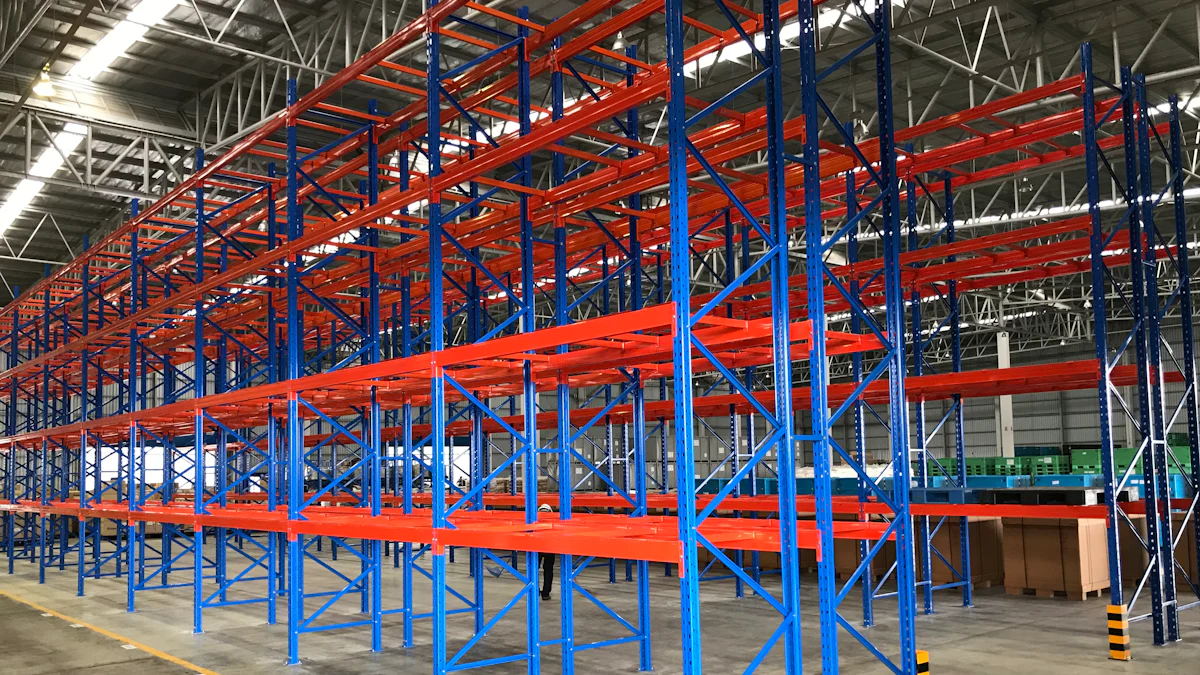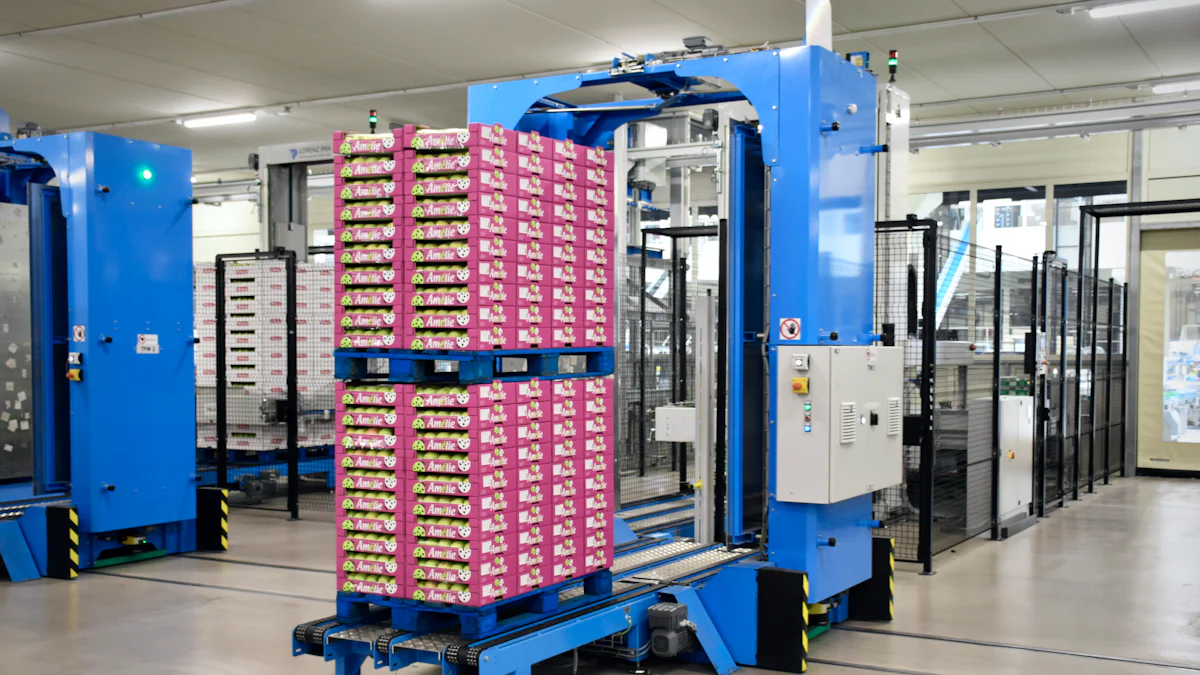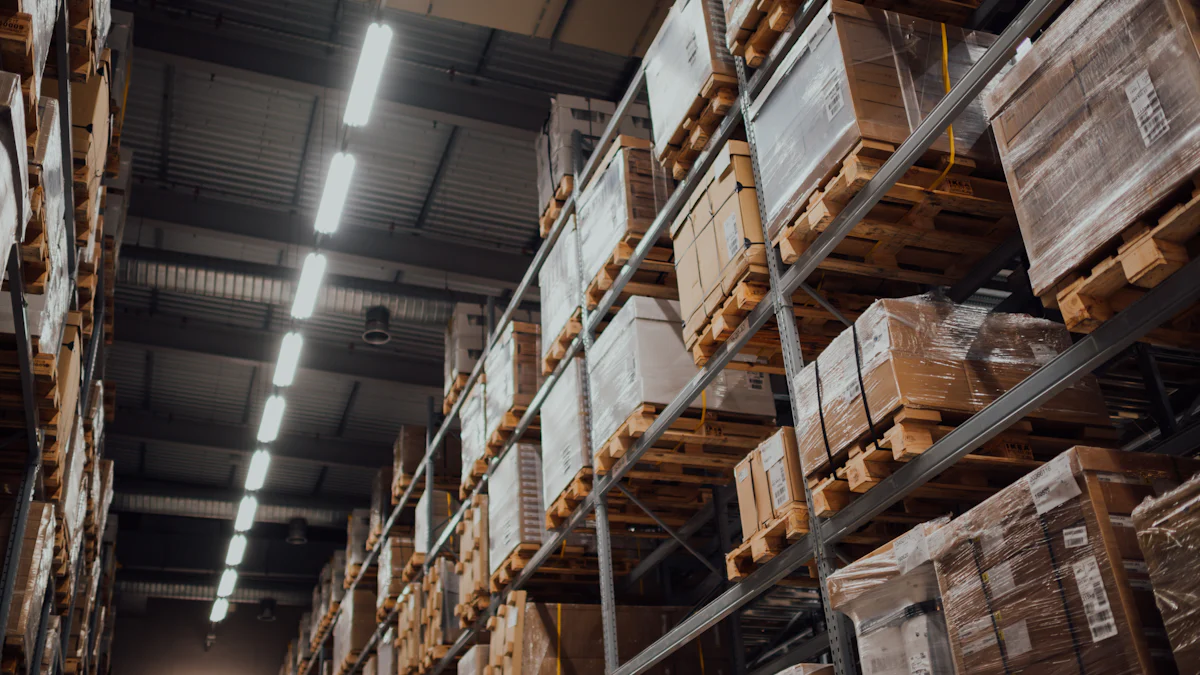Top Warehousing Solutions for High-Tech Manufacturing in 2024

High-tech manufacturing relies heavily on efficient warehousing to maintain seamless operations. The warehouse automation market could surpass $37.6 billion by 2025, highlighting the growing importance of advanced solutions. Significant transformations anticipated in 2024 will drive the need for innovative technologies. Over 75% of companies plan to automate warehouse operations by 2027. This rapid evolution necessitates cutting-edge warehousing solutions to stay competitive and meet industry demands.
Advanced Warehousing Technologies

Automation and Robotics in High-Tech Manufacturing
Automated Storage and Retrieval Systems (AS/RS)
Automated Storage and Retrieval Systems (AS/RS) revolutionize high-tech manufacturing by enhancing efficiency and accuracy. These systems use advanced technology to store and retrieve items with precision. Integration with Warehouse Management Systems (WMS) ensures optimal inventory control. AS/RS includes automated systems such as tote shuttles, mini-loaders, and vertical lift modules. These technologies reduce labor costs and minimize human error, making them indispensable for modern high-tech manufacturing facilities.
Collaborative Robots (Cobots)
Collaborative Robots (Cobots) play a crucial role in high-tech manufacturing. Cobots assist in various logistics processes, from goods transportation to order preparation. These robots work alongside human workers, boosting productivity and safety. Cobots enhance supply chain efficiency by performing repetitive tasks with high precision. The integration of Cobots in warehouses leads to faster order fulfillment and improved operational efficiency.
Internet of Things (IoT) in High-Tech Manufacturing
Smart Sensors and Tracking Devices
Smart Sensors and Tracking Devices transform high-tech manufacturing by providing real-time visibility into warehouse operations. These devices monitor environmental conditions, track inventory, and ensure the integrity of goods. IoT-enabled sensors collect data continuously, enabling proactive decision-making. This technology enhances inventory management and reduces the risk of damage or loss.
Real-time Data Analytics
Real-time Data Analytics empowers high-tech manufacturing by offering insights into warehouse performance. IoT platforms like IBM’s Watson IoT and Microsoft’s Azure IoT suite leverage advanced analytics to predict equipment failures. AI-driven sensors monitor robotic arms and other machinery, ensuring timely maintenance. Real-time data analytics optimize operations, leading to increased efficiency and reduced downtime.
Artificial Intelligence (AI) and Machine Learning
Predictive Maintenance
Predictive Maintenance utilizes AI and machine learning to foresee equipment issues before they occur. In high-tech manufacturing, this approach ensures continuous operation and minimizes disruptions. AI-driven platforms analyze performance metrics and send alerts when deviations occur. Predictive maintenance reduces repair costs and extends the lifespan of machinery, making it a valuable asset for manufacturers.
Inventory Optimization
Inventory Optimization through AI and machine learning streamlines warehouse processes in high-tech manufacturing. AI tools analyze inventory levels and predict demand, ensuring optimal stock levels. This technology assigns tasks to warehouse personnel based on real-time data, improving efficiency. Inventory optimization reduces excess stock and prevents shortages, contributing to cost savings and better resource management.
Sustainable Warehousing Practices

Energy-efficient Warehousing
Renewable Energy Sources
High-tech manufacturing facilities must adopt renewable energy sources to achieve sustainable warehousing. Solar panels and wind turbines provide clean energy, reducing reliance on fossil fuels. Companies like Logic create autonomous pallets that lower greenhouse gas emissions. These innovations help companies cut energy use and promote environmental sustainability.
Energy Management Systems
Energy management systems (EMS) optimize energy consumption in warehouses. These systems monitor and control energy use, ensuring efficient operations. EMS integrates with smart sensors to provide real-time data on energy usage. This technology reduces energy waste and lowers operational costs. Implementing EMS in high-tech manufacturing facilities leads to significant energy savings.
Waste Reduction Strategies
Recycling and Reuse Programs
Recycling and reuse programs play a vital role in sustainable warehousing. High-tech manufacturing facilities must implement these programs to minimize waste. Materials like cardboard, plastic, and metal can be recycled and reused. OLIMP Warehousing offers an on-demand platform that promotes sustainability by tracking empty miles. This initiative reduces the carbon footprint and supports eco-friendly practices.
Lean Warehousing Principles
Lean warehousing principles focus on eliminating waste and improving efficiency. High-tech manufacturing facilities benefit from adopting these principles. Lean warehousing involves streamlining processes, reducing excess inventory, and optimizing space utilization. This approach enhances productivity and minimizes resource consumption. Implementing lean warehousing principles leads to cost savings and a more sustainable operation.
Integration with Supply Chain Management
Seamless Data Integration
Cloud-based Solutions
Cloud-based solutions revolutionize data integration in high-tech manufacturing. These platforms provide scalable and flexible storage options. Companies can access real-time data from any location. This accessibility enhances decision-making and operational efficiency. Cloud-based systems also offer robust security features, protecting sensitive information. High-tech manufacturers benefit from reduced costs and improved data management.
Blockchain Technology
Blockchain technology ensures secure and transparent transactions within the supply chain. Each transaction gets recorded in a decentralized ledger. This method eliminates the risk of data tampering. Blockchain provides an immutable record of all activities. High-tech manufacturers gain increased trust and reliability in their operations. The technology also streamlines processes by reducing intermediaries and delays.
Enhanced Collaboration Tools
Digital Twin Technology
Digital twin technology creates virtual replicas of physical assets. These digital models simulate real-world conditions. High-tech manufacturers use digital twins to monitor and optimize warehouse operations. This technology allows for predictive maintenance and performance analysis. Digital twins enhance collaboration by providing a shared platform for stakeholders. The result is improved efficiency and reduced downtime.
Advanced Communication Platforms
Advanced communication platforms facilitate seamless interaction among supply chain partners. These tools support instant messaging, video conferencing, and file sharing. High-tech manufacturers experience enhanced coordination and faster decision-making. Communication platforms integrate with other systems, providing a unified interface. This integration leads to streamlined workflows and increased productivity.
Efficient warehousing solutions for high-tech manufacturing in 2024 include automation, IoT, AI, and sustainable practices. These technologies enhance productivity and reduce costs. The future of warehousing will see more advanced automation and integration with supply chain management. Companies must adopt these innovations to remain competitive. Staying ahead with advanced solutions ensures operational efficiency and sustainability. High-tech manufacturers should invest in these technologies to achieve long-term success.
See Also
Automated Future: Benefits of High-Tech Manufacturing Warehouses
Efficient Navigation: Achieving Success in High-Tech Manufacturing
Efficient Solutions: Addressing High-Tech Manufacturing's Supply Chain Challenges
Unlocking Potential: Understanding High-Tech Manufacturing Consulting
Cracking the Code: Revealing JUSDA's High-Tech Manufacturing Logistics Solutions
